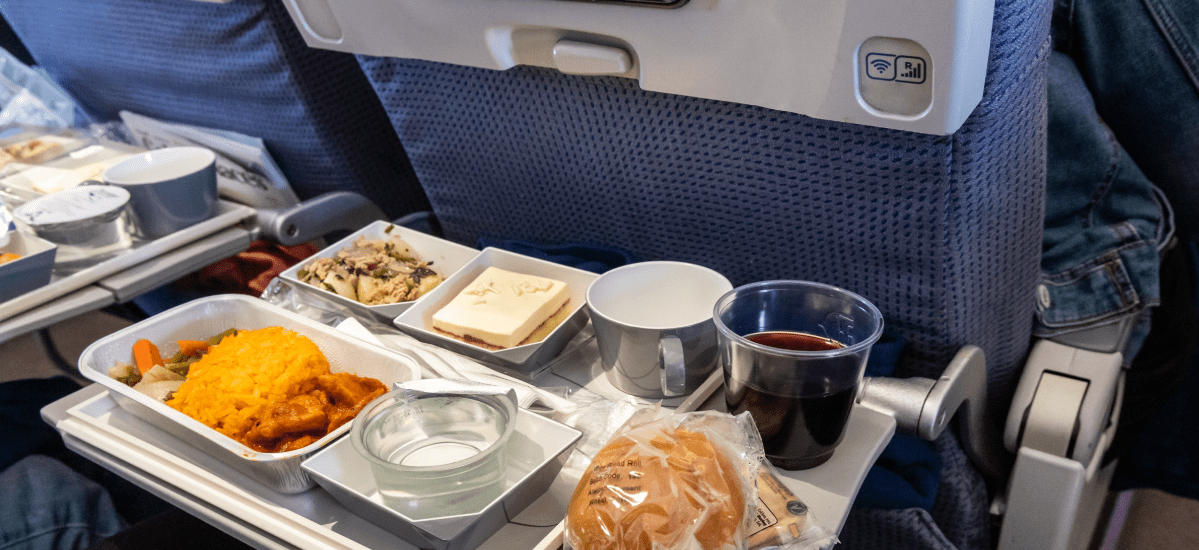When it comes to flying, most people think about the destination, the comfort of the seats, or the in-flight entertainment. But behind every smooth flight is a carefully orchestrated inventory system that ensures passengers enjoy the amenities they expect—whether it’s a warm blanket, a favorite beverage, or a snack at cruising altitude.
For airlines, inventory management isn’t just about meeting passenger expectations—it’s about optimizing operations, minimizing waste, and maintaining cost efficiency. Let’s dive into how asset and inventory management keep airlines on schedule and passengers satisfied.
Why Inventory Management is a Game-Changer
Imagine this: you’re on a long-haul flight, and they’ve run out of your preferred beverage or that cozy blanket you were hoping for. It’s frustrating, right? For airlines, this isn’t just about keeping passengers happy but also balancing costs, minimizing waste, and staying competitive.
Every item provided during your journey, from a Coke to napkins, cookies to plastic glasses, may be part of the airline’s inventory. Effectively managing these materials ensures:
- Avoiding stockouts: Flights stay stocked with the essentials, avoiding frustrating shortages for passengers.
- Minimizing waste: Overstocking leads to unnecessary expenses and wastage of materials.
- Streamlining operations: A smooth supply chain ensures flights are ready to go, fully stocked, and always ready on time.
This balance is crucial. For example, running out of a passenger favorite like Coke can lead to dissatisfaction, but overstocking can result in wasted resources, expired items, and higher expenses. The solution lies in fine-tuning supply chains and inventory tracking.
The Engine Behind the Scenes: DRP Operators
DRP operators (Distribution Requirements Planning) are at the core of airline inventory success and act as logistics masterminds. These professionals ensure that catering stations near airports are stocked perfectly.
Here’s how they do it:
- Consumption tracking: By analyzing inventory counts from catering stations, they determine how much was used (and how much is needed).
- Intelligent forecasting: Using this data, they predict future needs to avoid overstocking or understocking.
- Strategic ordering: Orders are calculated and sent to warehouses, ensuring supplies are ready when, where, and in the correct quantity needed.
For instance, with a delivery lead time of two weeks, a catering station that typically uses 40K napkins a week would require safety stock levels to never drop below 80K (minimum) or exceed 160K (maximum). This ensures that even in cases of supply chain delays, operations continue running smoothly with optimized stock levels.
The Backbone: National Distribution Centers (NDCs)
NDCs act as central hubs, supplying catering stations with everything they need. Managed by MRP (Material Requirements Planning) operators, these centers ensure:
- Adequate stock levels are maintained to support all catering stations, and inventory levels are optimized to meet airline needs.
- Supplies are ordered from vendors efficiently, factoring in lead times, economic order quantities, and expected demand.
While DRP operators focus on getting items to the proper catering stations, MRP operators handle the bigger picture. They ensure that NDCs are always well-stocked so that catering stations always receive what they need on time and in the right quantities.
Precision Logistics: How It All Comes Together
Every item you use during a flight—from a blanket of a specific size to a bottle of water—has a unique SKU (Stock Keeping Unit). This allows operators to track inventory at every step of the journey.
Here’s how the supply chain flows:
- Catering Stations: Where possible, replenished daily with precise quantities based on demand to meet immediate flight needs.
- NDCs: Stocked based on DRP forecasts and supplied by vendors or other NDCs, with operators factoring in lead times and supplier schedules.
- Vendors: Items are delivered on assigned days to avoid bottlenecks, ensuring smooth operations.
This process is designed for ultimate efficiency. Even when challenges arise, such as stock shortages, the system quickly adjusts through backorders or direct deliveries, ensuring flights remain unaffected.
Closing the Loop: Seamless Financial Operations
Once the goods are delivered, it’s time to settle the bills. This is where the Accounts Payable (AP) steps in:
- Invoice validation: Ensuring the quantity and price match the original purchase order.
- Three-way matching: Comparing the purchase order, invoice, and goods received to avoid errors.
Each purchase order undergoes rigorous checks to match invoices with delivered goods. This ensures accurate payments and allows airlines to resolve discrepancies promptly, further enhancing financial control. If discrepancies arise, like a price increase, AP works with suppliers to resolve them, keeping the airline’s finances on track.
Flying Smarter, Not Harder: The Benefits of an Asset Management System
An asset management system for airlines isn’t just about logistics—it’s a strategic advantage. By mastering inventory control, airlines ensure that every flight is a well-oiled machine, delivering satisfaction to passengers while maintaining profitability. It’s about creating a seamless travel experience while staying ahead in a competitive industry. By mastering inventory management, airlines achieve:
- Enhanced passenger satisfaction: Well-stocked flights ensure a positive travel experience since stockouts are minimized.
- Cost savings: Efficient ordering and reduced waste keep expenses in check.
- Operational efficiency: Supplies flow seamlessly from warehouses to catering stations to the aircraft, so flights are ready to go, avoiding costly delays caused by stock issues.
- Cost efficiency: Smarter inventory management helps airlines keep fares competitive.
- Sustainability: Less waste from overstocked or expired items.
The next time passengers enjoy a smooth, well-stocked flight, they can thank the intricate, behind-the-scenes work of inventory management. These systems aren’t just necessary for airlines—they’re the secret to delivering a world-class travel experience.
See What Paxia Assets Can Do for You
Ready to learn more about how technology is revolutionizing airline operations? Visit us at www.paxiasolutions.com to learn more about Paxia Cloud with Paxia Assets.
